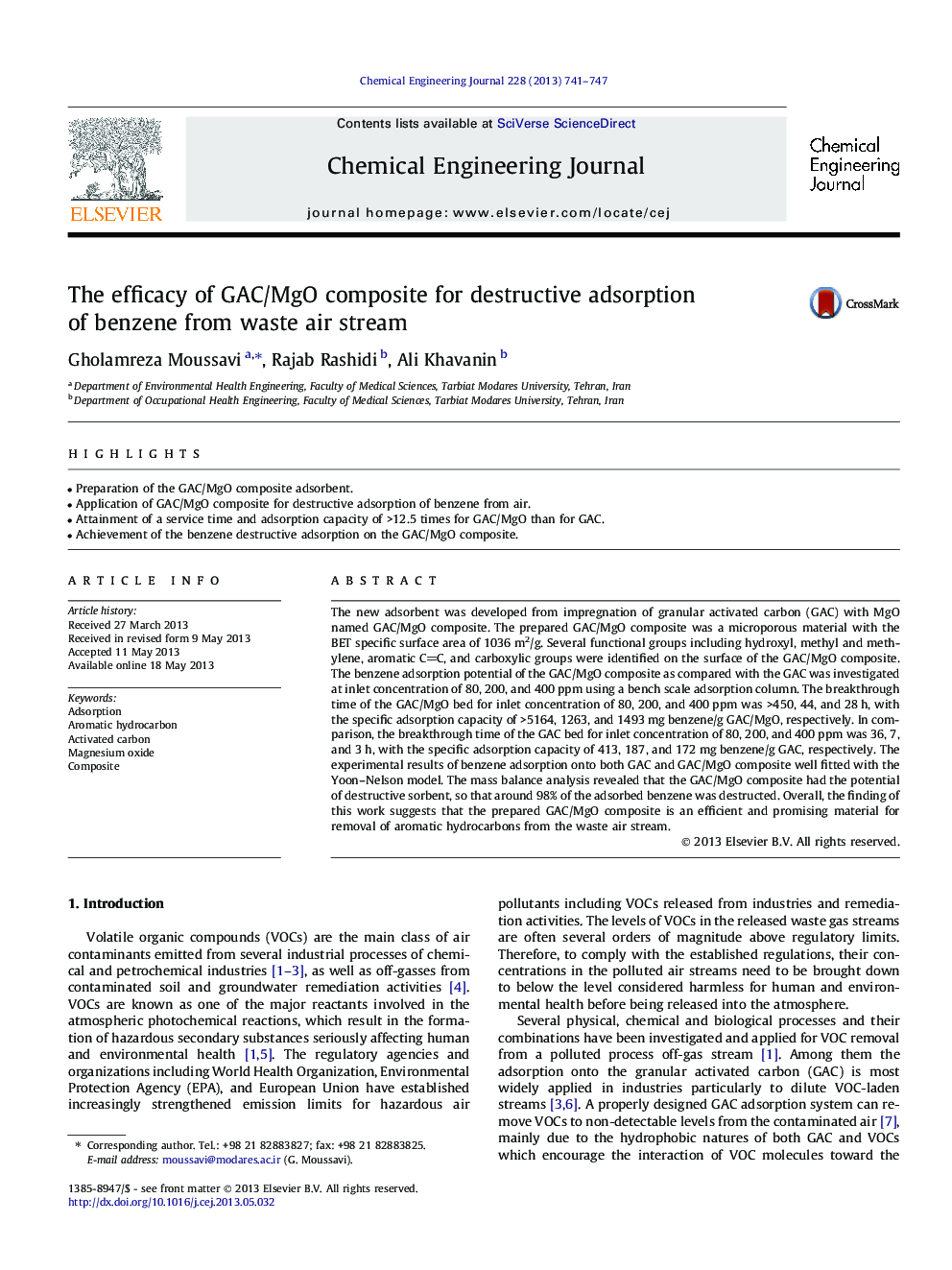| Article ID | Journal | Published Year | Pages | File Type |
|---|---|---|---|---|
| 6587438 | Chemical Engineering Journal | 2013 | 7 Pages |
Abstract
The new adsorbent was developed from impregnation of granular activated carbon (GAC) with MgO named GAC/MgO composite. The prepared GAC/MgO composite was a microporous material with the BET specific surface area of 1036 m2/g. Several functional groups including hydroxyl, methyl and methylene, aromatic CC, and carboxylic groups were identified on the surface of the GAC/MgO composite. The benzene adsorption potential of the GAC/MgO composite as compared with the GAC was investigated at inlet concentration of 80, 200, and 400 ppm using a bench scale adsorption column. The breakthrough time of the GAC/MgO bed for inlet concentration of 80, 200, and 400 ppm was >450, 44, and 28 h, with the specific adsorption capacity of >5164, 1263, and 1493 mg benzene/g GAC/MgO, respectively. In comparison, the breakthrough time of the GAC bed for inlet concentration of 80, 200, and 400 ppm was 36, 7, and 3 h, with the specific adsorption capacity of 413, 187, and 172 mg benzene/g GAC, respectively. The experimental results of benzene adsorption onto both GAC and GAC/MgO composite well fitted with the Yoon-Nelson model. The mass balance analysis revealed that the GAC/MgO composite had the potential of destructive sorbent, so that around 98% of the adsorbed benzene was destructed. Overall, the finding of this work suggests that the prepared GAC/MgO composite is an efficient and promising material for removal of aromatic hydrocarbons from the waste air stream.
Related Topics
Physical Sciences and Engineering
Chemical Engineering
Chemical Engineering (General)
Authors
Gholamreza Moussavi, Rajab Rashidi, Ali Khavanin,
